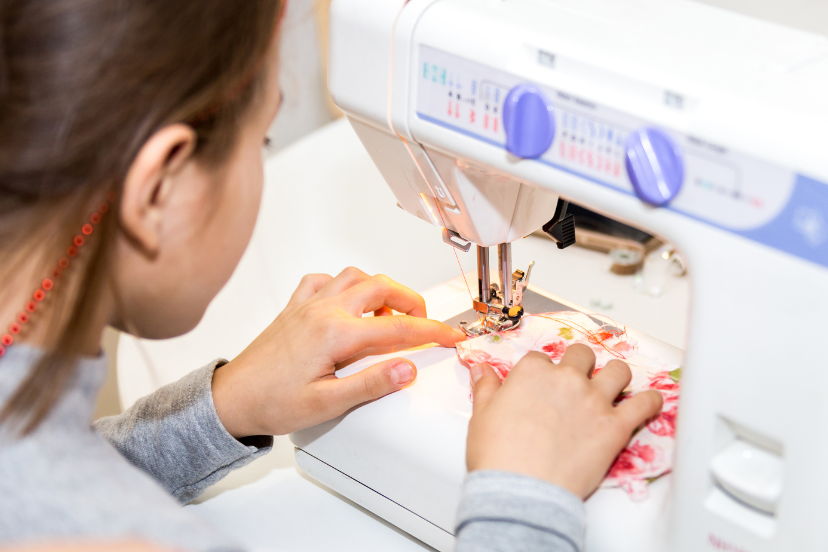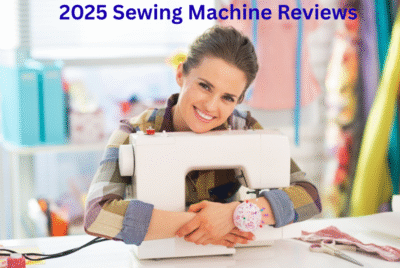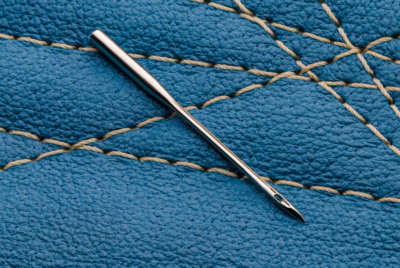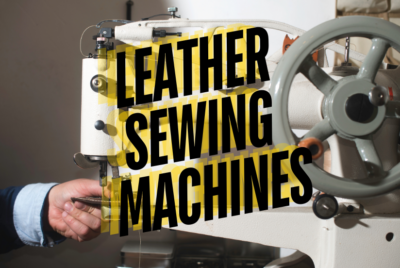Sewing Machine Selection Guide
When you decide to make the investment in a sewing machine, you need to spend time to understand the importance of choosing the right sewing machine for your needs. There are several selection criteria to consider.
Regardless of all the other factors mentioned below, start with what sewing projects you are planning to pursue. Then, whether you are a beginner, a hobbyist, or a professional consider what experience you want to have. Lastly determine what you can afford to improve the quality of your projects.
A sewing machine is not just a tool but a partner in your creative journey. Choosing the right one can be the difference between frustration and fulfillment.
With a wide range of options available, it can be overwhelming to navigate through the various considerations. Here are valuable guidelines to help you determine what to look for when buying a sewing machine so you can make an informed decision.
Understanding Sewing Machine Types
When it comes to sewing machines, there are three main types: mechanical, electronic, and computerized. Each type has its own set of advantages and features, catering to different user preferences and skill levels.
Mechanical Sewing Machines
Mechanical sewing machines are the traditional type of machines that rely on manual control. They operate through a series of mechanical gears and levers, allowing you to adjust the stitch length, width, and tension manually.
These machines are generally durable and straightforward to use. This makes them suitable for beginners or those on a tight budget.
- Operation: Mechanical sewing machines are manually operated. Stitch patterns are selected and adjusted through dials and knobs.
- Features: They typically offer basic stitch patterns such as straight and zigzag stitches. Adjustments for stitch length, width, and tension must be made manually.
- Complexity: These machines are simpler in terms of functionality, making them easier to maintain and repair. They are well-suited for beginners and those who prefer straightforward sewing tasks.
- Price: Generally, mechanical sewing machines are less expensive than their electronic or computerized counterparts.
Electronic Sewing Machines
Electronic sewing machines utilize electronic components to enhance functionality and convenience. They offer features such as automatic needle threading, built-in stitch patterns, and adjustable speed control.
These machines are ideal for intermediate sewists who want more versatility and efficiency in their projects.
- Operation: Electronic sewing machines combine mechanical parts with electronic components. Stitch selection is often done through buttons or a dial, with the chosen stitch displayed on an LED screen.
- Features: They offer a wider range of stitches than mechanical machines, including various utility, decorative, and sometimes even embroidery stitches. They may also include features like automatic needle threading, tension adjustment, and a start/stop button.
- Complexity: Slightly more complex than mechanical machines but not as advanced as computerized models. They strike a balance between functionality and ease of use.
- Price: These machines are more expensive than mechanical models due to their advanced features, but prices can vary widely based on brand and capabilities.
Computerized Sewing Machines
Computerized sewing machines are the most advanced type, equipped with computer technology and a digital interface. They offer a wide range of stitch options, precise embroidery capabilities, and programmable functions.
Computerized machines are suitable for experienced sewists or professionals who require intricate designs and advanced customization.
- Operation: Computerized sewing machines are the most advanced, featuring a microprocessor that controls all operations. They are operated via a touchscreen or buttons and often come with an LCD or LED screen for stitch selection and adjustments.
- Features: These machines offer a vast array of stitches and may include programmable and customizable stitch patterns, embroidery capabilities, and the ability to connect to a computer or the internet for downloading new patterns.
- Complexity: With their advanced features, computerized sewing machines can be more complex to learn and use, especially for beginners. However, they offer precision and convenience for advanced sewing projects.
- Price: Computerized sewing machines are typically the most expensive due to their technology, features, and the level of precision they offer.
Sewing Machine Models
Within each sewing machine type, there are different models that cater to specific skill levels and sewing requirements. Since there are a variety of combinations of types, models, features, and functions, let’s establish terminology to categorize sewing machine models as we begin to explore all of the different possibilities.
Basic Sewing Machine Models
When it comes to beginners or occasional sewists, having access to basic sewing machine models is crucial for completing everyday sewing tasks efficiently. These machines not only provide essential features but also offer convenience and ease of use. Here are some thoughts about the minimalist capabilities that should be included.
- Straight stitches and zigzag stitches are the primary stitching
- Several built-in stitch patterns for some creativity
- User-friendly interface
- Intuitive controls easy to understand and navigate
Operating a basic sewing machine should be enjoyable and easy, even for beginners. All of the instructions and controls should require a minimal learning curve. That way you can quickly get started on your sewing projects without feeling overwhelmed. Additionally, it will make it easy to restart if you only occasionally use your sewing machine.
Intermediate Sewing Machine Models
For sewists with some experience under their belt who are eager to dive into more creative ventures, intermediate sewing machine models are the perfect choice. These machines are specifically designed to provide a wider array of options and advanced features, empowering you to explore new horizons in your sewing journey. Here are some thoughts about what to consider when you want to upgrade your sewing capabilities.
- Extended selection of decorative stitches
- Heirloom stitches
- Alphanumeric fonts for monogramming or personalization
- Buttonhole functions
- Adjustable presser foot pressure to adapt to different fabric types
- Automatic thread cutters
Intermediate sewing machine models are a game-changer for sewists seeking to expand their creative boundaries. With their extensive stitch options, advanced features like buttonhole functions and adjustable presser foot pressure, and compatibility with diverse project types, these machines empower you to unlock your creativity and achieve impressive sewing outcomes. Get ready to embark on exciting sewing adventures with an intermediate sewing machine model by your side.
Advanced Sewing Machine Models
Advanced sewing machine models stand at the forefront, offering an unparalleled combination of advanced features and exceptional performance. These machines are specifically designed to cater to the needs of professional sewists or individuals who are eager to undertake complex and demanding projects. Some standout features to look for in these sewing machines.
- Extensive selection of decorative stitches
- Intricate and eye-catching decorative stitches, such as floral motifs, geometric patterns
- Precise tension control
- Spacious work area
- Ability to handle diverse fabrics and threads
- Specialized sewing feet for zippers, blind hems, overcasting, free motion quilting
Advanced sewing machine models represent the pinnacle of sewing technology, combining advanced features with outstanding performance. From an extensive selection of decorative stitches and precise tension control to spacious working areas and specialized sewing feet, these machines provide the ultimate toolkit for professional sewists and ambitious creators. Unleash your creativity and embark on extraordinary sewing journeys with an advanced sewing machine model by your side.
What To Consider When Looking For A Sewing Machine
Now that we have categorized and described sewing machine types and models, it’s time to determine what you are looking for in a sewing machine.
When venturing into the world of sewing, whether as a hobbyist or a professional, selecting the right sewing machine can significantly influence your crafting experience and the quality of your projects.
A sewing machine is not just a tool but a partner in your creative journey, and choosing the right one can be the difference between frustration and fulfillment.
In this article, we will explore the crucial factors to consider when searching for and purchasing a sewing machine, ensuring you make an informed decision that meets your needs.
1. Purpose and Projects
What will you be using the machine for?
Identify your main sewing activities, as machines come with features for specific tasks. Here are some general categories.
- Basic Repairs and Alterations: A basic mechanical machine might be sufficient.
- Crafting and Home Decor: Look for decorative stitches and fabric versatility.
- Quilting: Seek out a large throat space and specialized quilting feet.
- Garment Making: Essential features include buttonhole stitches and a free arm.
2. Mechanical vs. Electronic vs. Computerized
The differences among mechanical, electronic, and computerized sewing machines primarily lie in their operation, features, complexity, and price.
Mechanical machines are straightforward, durable, and typically more affordable. This makes them suitable for beginners or those with basic sewing needs. They use manual controls for stitch selection and adjustment.
Electronic Machines sit between mechanical and computerized options. They combine the tactile feel of mechanical models with some of the convenience features of computerized machines. They typically offer a wider range of stitches than mechanical models, easy stitch selection with push buttons or dials, and some automated features like needle threading, making them suitable for sewers looking to step up from basic models without moving to fully computerized systems.
Computerized machines, on the other hand, offer a broader range of stitches, automatic settings, and advanced features. These represent the pinnacle of sewing machine technology, boasting an extensive array of stitches, fully automatic settings, touchscreens for navigation, and sometimes even connectivity options for downloading stitch patterns or firmware updates. Their precision and customization options cater to experienced sewers or those undertaking complex projects requiring high levels of detail and versatility.
The choice among mechanical, electronic, and computerized sewing machines depends on your sewing needs, budget, and how much you value convenience and advanced features.
When comparing them the distinctions lie in their functionality, user interface, feature set, and pricing.
3. Budget
Your budget is a significant factor. Prices can range from very affordable to quite expensive for high-end models. It’s essential to balance your financial constraints with the features and quality you need. Remember, investing in a slightly more expensive machine that meets all your requirements can be more cost-effective in the long run.
Balance your financial constraints with the features and quality you need:
- Entry-Level: Suitable for basic tasks, typically under $300.
- Mid-Range: Offers more features for hobbyists, priced between $300 and $800.
- High-End: For advanced sewing and professional-grade performance, priced above $800.
4. Stitches
Consider the variety and types of stitches you need. Basic machines typically offer straight, zigzag, and a few more stitches, which might suffice for simple projects. However, more advanced machines offer a wide range of stitches, including decorative and stretch stitches, which can be advantageous for more complex projects.
Consider the types and variety of stitches for your projects:
- Basic Stitches: Ensure essentials like straight, zigzag, and buttonhole stitches are included.
- Advanced Stitches: Decorative and stretch stitches add versatility for complex projects.
5. Ease of Use
For beginners, it’s crucial to choose a machine that’s user-friendly. Look for features like easy threading, straightforward stitch selection, and clear instruction manuals. For more experienced users, ease of use might include features like automatic thread cutting, needle threading, and the ability to easily adjust stitch length and width.
Look for features that match your skill level, from beginner-friendly to advanced conveniences:
- Beginners: Features like easy threading and stitch selection are key.
- Advanced Users: Appreciate automatic thread cutters and the ability to save stitch combinations.
6. Durability and Build Quality
A well-built machine can last for many years. Look for machines with a strong internal frame (preferably metal) and good overall construction. A heavier machine is typically more stable and better at handling heavy-duty fabrics.
A well-constructed machine ensures longevity and stability:
- Internal Frame: Metal frames offer durability.
- Weight: Heavier machines provide stability during heavy-duty sewing.
7. Accessories and Feet
Check what accessories and presser feet come with the machine, as these can significantly expand its versatility. Basic feet for zippers, buttonholes, and hemming are essential, but additional feet like a walking foot or a quilting foot can be valuable for specific projects.
The right accessories can greatly expand your machine’s versatility:
- Standard Accessories: Essential items should be included with your purchase
- Presser Feet: Ensure basic feet are included and consider additional feet for specific projects.
8. Brand and After-Sales Service
Consider the brand’s reputation for quality and the after-sales service it offers. Availability of spare parts, customer service, and access to repairs are important, especially for more expensive machines.
Consider the brand’s reputation and the support provided after purchase:
- Reputation: Well-regarded brands often ensure quality and reliability.
- Warranty: A comprehensive warranty can provide peace of mind.
9. Reviews and Recommendations
Before making a purchase, read reviews and ask for recommendations from experienced sewers. Their insights can provide valuable information on the reliability and performance of different machines.
Leverage the experiences of others to inform your choice:
- Online Reviews: Look for detailed reviews and ratings.
- Sewing Communities: Engage with sewing groups for firsthand recommendations.
10. Test Drive
If possible, test the sewing machine before purchasing. This allows you to get a feel for how it operates, its noise level, and whether it meets your comfort and ease-of-use requirements.
- Local Dealers: Provides the opportunity to test different models.
- Sewing Classes: Some classes allow you to use a machine, offering a practical trial.
Summary
Choosing the right sewing machine involves a careful consideration of your sewing goals, budget, the machine’s features, its overall quality and ease of use. By taking the time to assess your needs and researching your options, you can find a sewing machine that not only fits your budget but also inspires and facilitates your creative endeavors for years to come.
See our article, “Sewing Machine Manufacturers Review” for sewing machine company reviews and a link to its sewing machine website.
Conclusion
The choice of a sewing machine depends on your individual needs, preferences, and budget. Each of the reviewed sewing machine brands has its own strengths and areas of expertise. After considering the features, reliability, and customer feedback of the popular sewing machine manufacturers, here are some recommendations.
- Beginners and those on a budget: Brother sewing machines offer a great balance of user-friendliness, affordability, and versatility.
- Experienced sewers and quilting enthusiasts: Pfaff and Bernina sewing machines excel in advanced features, precision, and stitch quality.
- Professional and industrial sewing: Juki sewing machines provide high-speed stitching and exceptional performance for heavy-duty projects.
Remember to thoroughly research each model and consider your specific sewing needs before making a final decision. Happy sewing!
FAQ
What factors should I consider when choosing a sewing machine?
When choosing a sewing machine, consider factors such as your sewing skill level, the type of projects you’ll be working on, the features you require, your budget, and the reliability and customer support offered by the brand.
Which sewing machine brand is best for beginners?
Brother sewing machines are often recommended for beginners due to their user-friendly features, affordability, and reliable performance.
Are computerized sewing machines better than mechanical ones?
Computerized sewing machines offer advanced features, precise stitching, and more automation options. However, mechanical machines are often simpler to use and more budget-friendly. The choice depends on your skill level and the specific features you require.
Can I use a basic sewing machine for quilting?
You can use a basic sewing machine for quilting. However, machines with specialized quilting features, such as extended sewing beds and quilting stitches, can enhance your quilting experience.
How long do sewing machines typically last?
The lifespan of a sewing machine can vary depending on usage, maintenance, and quality. With proper care and regular servicing, a well-built sewing machine can last for decades.
As a testament to longevity antique treadle sewing machines are sought after by collectors. The Article “Antique Treadle Sewing Machines: Timeless Beauty” provides useful information if you are considering obtaining a collector sewing machine.
What is the average price range for sewing machines?
The average price range for sewing machines can vary based on several factors, including brand, features, quality, and additional accessories. However, here are some guidelines.
Beginning Sewing Machines: Typically between $100 and $300. These machines offer essential features, ease of use, and are budget-friendly, making them accessible to those just starting their sewing journey.
Intermediate Sewing Machines: With enhanced features and additional functionalities these machines usually have an average price range of $300 to $800.
Advanced Sewing Machines: Top-tier advanced sewing machines, designed for professional sewists or individuals pursuing complex projects, tend to have an average price range of $800 to $3,000 or more. These machines offer exceptional performance, advanced features such as precise tension control, extensive stitch options, larger working areas, and specialized sewing feet. They are built to meet the demands of intricate embroidery, couture sewing, and other high-level sewing techniques.
Where can I purchase sewing machines and accessories?
Sewing machines and accessories are available at various retailers, both in-store and online. The manufacturers website have been included in this article. You can check local sewing machine dealers, department stores, or trusted online platforms for a wide selection of options.
RetroSewMachines.com is a participant in the Amazon Services LLC Associates Program. As an Amazon Associate, we earn from qualifying purchases. We also participates in other affiliate programs and may earn a referral commission if you purchase through links on this website. The information presented here is for general educational purposes only.





Comments are closed.